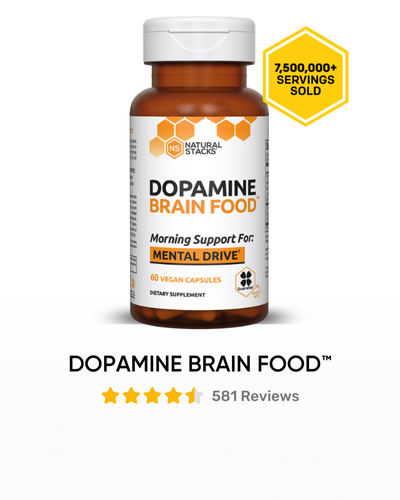What Are Your Greatest Strengths?

How To Reach Your Potential by Leveraging Skills You Already Have
The only way to contribute your greatest gifts in this world is to develop rare and valuable skills.
That means deliberate practice.
That means craft.
And ultimately, that means mastery (or something close).
The thing is, Instead of running around like a chicken with its head cut off, you need to have a firm understanding of what your true skills actually are.
Solve for that, and you'll be way ahead of the game because you'll know where to focus your energy, which opportunities to pursue, and which to leave in the dust.
In this article you're going to learn the five steps to uncover the unique skills you already have so you leverage them to do work you love.
Are you ready?
Let's get started.
What Are You Actually Good At?
Before we dive in, I want to talk about confidence.
There are two types:
1. Uninformed Confidence is:
"I think I can do X", "I believe I can do X"
In this scenario you try to have confidence first, then take action second.
This is the kind of false confidence recommended in books about positive psychology and other book in the self help genre.
This is not the way to build real confidence.
2. Informed Confidence:
It's not, "I think I can do X" or "I believe I can do X"
"It's, I KNOW I can do X. Because I've done it."
"And here's the proof."
In this scenario you go from action to confidence, not the other way around.
To figure out what you're actually good at, you need to uncover the things you do that make people notice. And once you do that, you'll have the confidence to set out and develop those skills to leverage the opportunities you want.
To find this out, you have to ask the people closest to you.
Heads up: It's going to feel amazing being told you’re awesome, especially when those compliments come from people we love and respect.
But flattery and self-congratulatory remarks aren’t really useful to us.
Just look at what happened when I texted my mom.
Aw. Moms.
Similarly, asking a good friend in the wrong way can be equally unhelpful.

To his credit, he's not wrong.
The goal is to ask the people closest to us what we excel at so we can get an objective view of our strongest skills and how we can bring value to others.
To do that, we're going to go through five steps that will leave you with with highly actionable, specific statements about the things you do really well.
Those will become your Prime Movers.
Step 1: Send The Prime Mover Response Email
To start, you need to ask your friends, family, and coworkers for some objective feedback.
I've found that sending an email works best since it feels more formal.
Here's the exact template I used to get responses from dozens of people in my life and you're welcome to use it too.

If you don’t hear back in 3-5 days, send this follow-up email.

Send the Prime Mover response email out to 5 - 10 people who know you really well.
Shoot for quality over quantity, since the more responses you get, the longer the exercise will take.
Step 2: Break Down Your Responses and Get To The ‘Why’
Once you get all your responses, you'll feel REALLY good about yourself.
All these people you like saying positive things about you will be an instant ego boost, but we still need to go deeper.
Now we need to figure out why they said what they said.
We need to figure out what we do in our day-to-day lives that makes them feel this way about us.
To do that you’ll need to turn those responses into concise, actionable statements about the things you do.
First, copy and paste each response you got into a single document.
Next, go through each response and look for resonant phrases or words.
We’ll call these Jumpers.
As you read through your responses and come across words and phrases that make you think, “Man, that sounds just like me”, highlight them.
After all your Jumpers are highlighted, your document is going to look something like this:

Shoutout to my pal Brian.
To make things easier to read, the next thing you'll want to do is delete everything but your Jumpers and paste them into a new document.
TIP: If you're using Google Docs, right-click the highlighted text and click ‘select all matching text’
Then, copy and paste into a new document.
Once you do this for every response, you’ll have all your jumpers in a single list.

Depending on how many responses you got, it's likely you've have a few pages of these short sentences and snippets.
Step 3: Organize Your Jumpers Into Themes
Now that you have all your Jumpers in one doc, it’s time to group them by theme.
You can do this in whatever way makes the most sense to you, but you should highlight each theme with it's own color to keep them organized.
Here are the five common themes I identified:

Now, these aren't your final Prime Movers, but we're getting closer.
Step 4: Ask Yourself__________
Now that you have a good idea of the underlying themes of your strengths, you need to ask yourself:
“What do I do in my life that made people say this about me?”
This step will require some work. Really take inventory of the things you do in your life that people might notice.
Take an hour or so to complete this step.
In the same doc as your compiled responses and new themes, write down a few sentences describing the things you do that you think made people say what they said.
Once you’ve gone over your themes and jotted down a few sentences explaining the ‘why’, you’ll have your Prime Movers.
Here's an example of one of my Prime Movers:

Step 5: Condense What You Wrote Into Action Statements
Now your raw responses are grouped into themes -- your Prime Movers -- and you’ve started to identify what you do in your life that makes people notice.
In this last step, we'll use all of the information we've collected so far to create powerful statements that describe what you do best and what other people value about you.
Each statement should:
- Start with a short, action-oriented sentence.
- End with a few clarifying sentences that explain how.
AND
When going through this step, make sure each Prime Mover describes:
- The skill itself, not the personality traits
- Something you do, not something you are.
Here are mine:

So Now You Know Your Primer Movers... Now What?
If you went through the steps, congratulations, you know what skills to focus on and develop.
- No more guessing or deluding yourself.
- No psyching yourself up with flimsy, phony confidence and hoping the skills come.
- No more uncertainty of where you should focus your efforts.
Now, moving forward, for every opportunity that comes your way, ask yourself:
“Will this opportunity enable me to use my Prime Movers?”
If the answer is yes, and it satisfies at least a few of your Prime Mover criteria, then you should definitely consider it.
If the answer is no, and it doesn’t hit any of your Prime Movers, well, that may be the clearest sign to pass and move on to the next thing that comes along.
Note: All credit is due to Nate Green of Precision Nutrition for this one. This strategy is his baby and I just had to share it with you all because I know firsthand how valuable it is.
Check out his blog here and make sure to subscribe to his email list -- it's one of the very few I read regularly.










